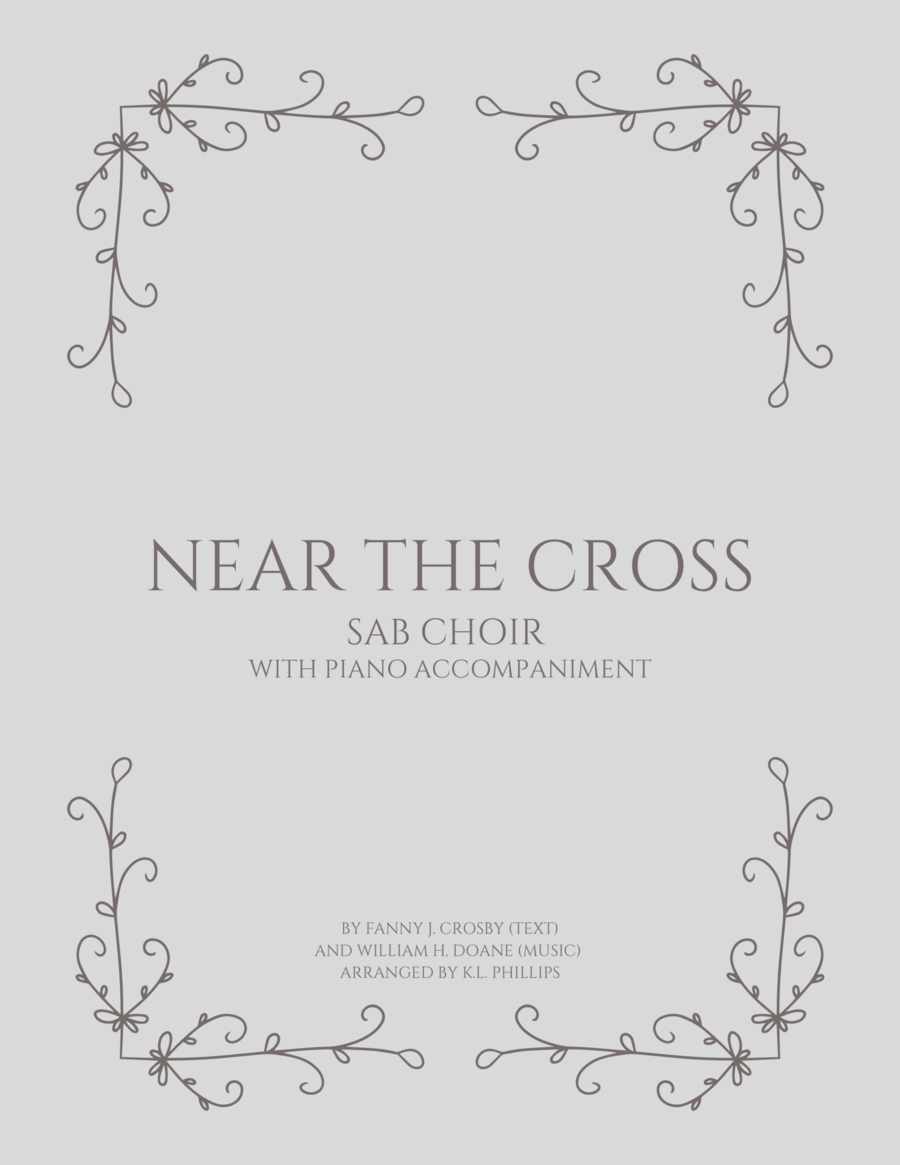Choral Choir (SAB) - Level 3 - Digital Download SKU: A0.1193124 Composed by Fanny J. Crosby (text) and William H. Doane (music). Arranged by K.L. Phillips. Christian,Easter,Praise & Worship,Religious,Sacred. Octavo. 8 pages. K L Phillips #792577. Published by K L Phillips (A0.1193124). Arranged for SAB Choir with piano accompaniment, this piece would be a lovely addition to any Christian worship service, but is especially appropriate for Lent, Good Friday or Easter services. Lyrics include verses 1 and 4. (This arrangement was influenced by the work of Clara Schumann.)Â Performance time - 1:50Soprano Vocal Range: C4-D5Alto Vocal Range: G3-D5Baritone Vocal Range: C3-Bb3A piano accompaniment track is available separately at Sheet Music Plus - Piano Accompaniment Track for Near the Cross - SAB Choir
